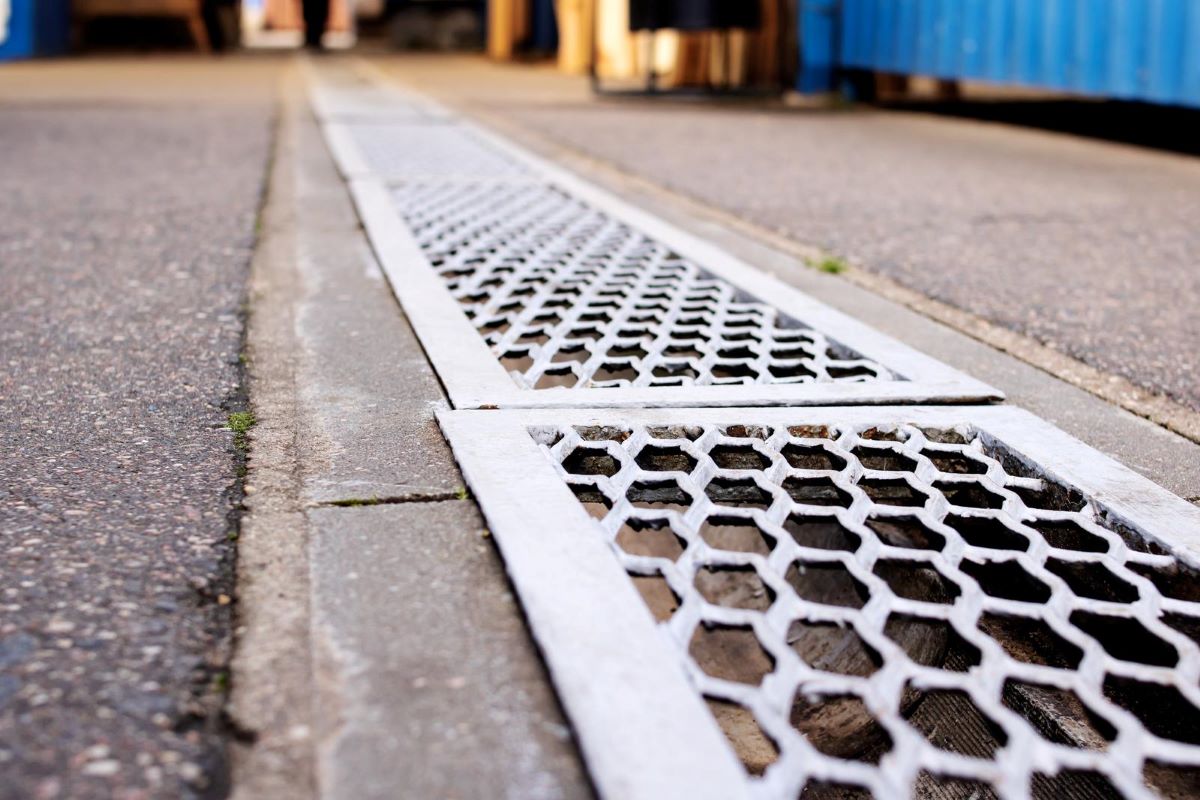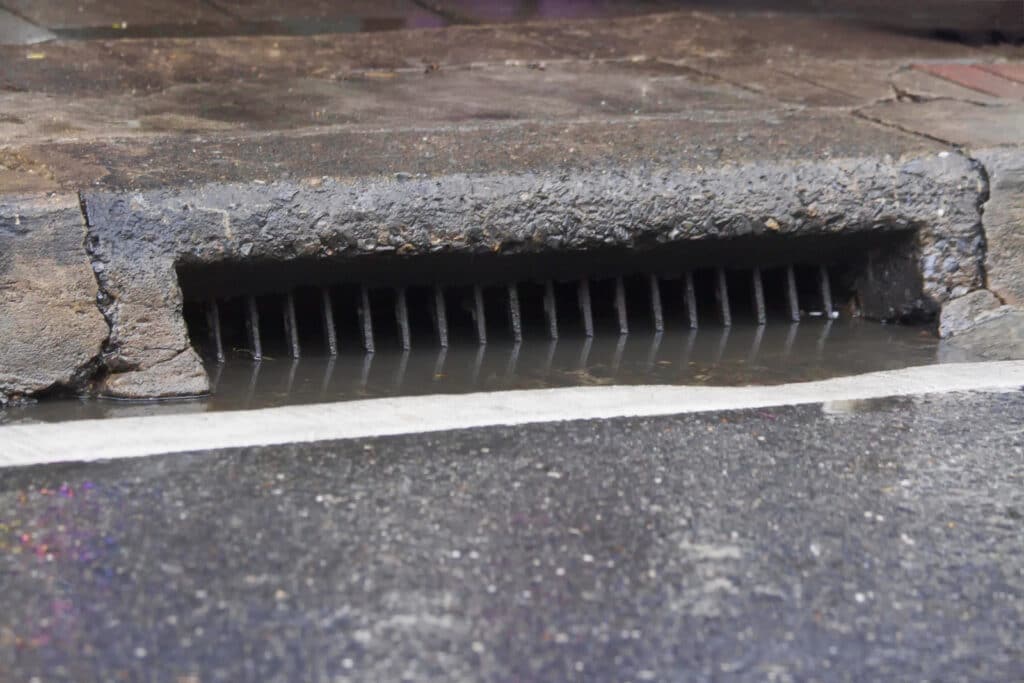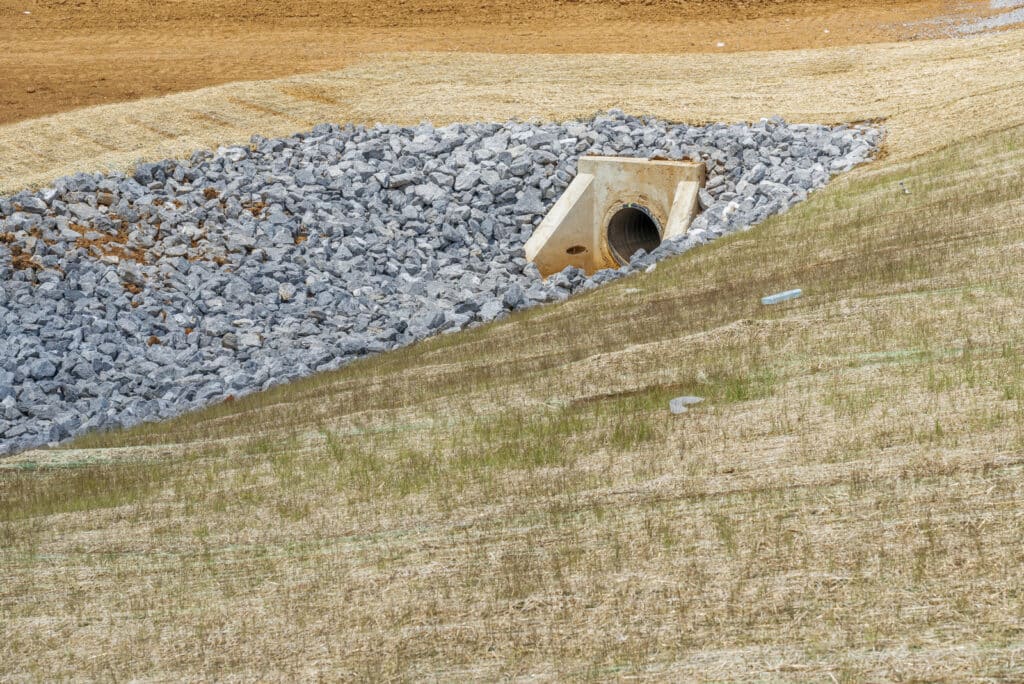Create Seamless Environments with State-of-the-art new drainage

Designing a drainage system for a property involves careful planning to effectively manage rainwater, prevent water-related issues, and comply with local regulations. Here at Fox Drainage, we would like to show you the key steps in designing a drainage system for a property:
When considering the importance of drainage for new buildings in Auckland, New Zealand, several specific factors and regional considerations come into play.
Here is a step-by-step guide of what you need to do and consider when designing your drainage for a new or existing property.
Evaluate the landscape of the property to identify high and low points, natural drainage pathways, and areas prone to flooding or erosion.
- Consider the soil composition, as different soils have various drainage capabilities. In Auckland, for example, the volcanic soil can influence drainage solutions.

Rainfall and Weather Conditions:
Auckland is known for its moderate maritime climate with relatively high levels of rainfall, especially during the winter months. The city experiences frequent rain showers and occasional heavy downpours. Proper drainage systems are essential to manage this rainfall and prevent water-related issues, such as flooding and water damage.
Volcanic Geology:
Because Auckland is situated on a volcanic field, this means the underlying geology is quite different from many other cities. The volcanic soil can be prone to shifting, and effective drainage helps stabilise the soil, reducing the risk of land subsidence or instability of foundations.
Coastal Location:
Auckland’s proximity to the sea and numerous harbours makes it susceptible to coastal erosion and storm surges. Drainage systems must consider the potential for rising sea levels and increased water levels during severe weather events, requiring robust coastal drainage solutions.
Hilly Terrain:
And because Auckland is known for its hilly terrain, the topography can impact drainage. Water tends to flow downhill, and efficient stormwater management is necessary to prevent soil erosion, landslides, and flooding in lower-lying areas.
- Legal Requirements:
New Zealand has strict building codes and regulations related to drainage and stormwater management. Auckland, as a major city, enforces these standards to ensure public safety, protect the environment, and minimise the risk of water-related issues in new construction projects.
Legal requirements related to drainage for new buildings in Auckland, New Zealand, are designed to ensure that construction projects meet specific standards and regulations aimed at safeguarding public safety, preserving the environment, and maintaining the integrity of the city’s infrastructure. Here are some key aspects of the legal requirements:
Auckland Council has a large variety of resources available for residents to look at prior to designing their properties.
We would recommend looking at the city technical guides on the design manual provided by the council to ensure that all work completed is going to be in compliance with the regulations. This is also very helpful as it provides examples of previous designs as well as covers a variety of different property types so you can find the one that is best suited to you and your needs.
Building Codes and Regulations:
New Zealand has well-defined building codes and regulations that address drainage and stormwater management. These codes provide detailed guidelines on how drainage systems should be designed, installed, and maintained. Compliance with these codes is mandatory for all construction projects in Auckland.
Compliance with Auckland Council:
The Auckland Council is the local governing body responsible for regulating building and development in the region. They have specific bylaws, rules, and regulations related to drainage and stormwater management. Builders and property owners must obtain the necessary permits and approvals from the Auckland Council to ensure their projects meet legal requirements.
Drainage Plans and Consent:
As part of the building consent process, property developers and builders must submit detailed drainage plans. These plans outline how stormwater will be managed on the site and must adhere to specific design standards and criteria. The Auckland Council reviews and approves these plans to ensure they meet legal requirements.

Erosion and Sediment Control:
The legal requirements often include measures to control erosion and sediment during construction. These measures aim to prevent soil runoff into waterways and protect the environment. They typically require the use of silt fences, sediment basins, and other erosion control techniques.
Stormwater Management:
Legal requirements dictate how stormwater is collected, treated, and discharged. Auckland’s geography, with its hilly terrain and proximity to the sea, makes effective stormwater management vital. It often involves the use of detention and retention ponds and systems for treating stormwater to remove pollutants.
Wastewater Disposal:
The disposal of wastewater, including sewage, is subject to strict regulations. Legal requirements ensure that wastewater is properly treated and disposed of to prevent contamination of water sources and protect public health.
Compliance Inspections:
The Auckland Council or other relevant authorities conduct inspections to ensure that drainage systems are installed correctly and are in compliance with the approved plans and legal requirements. Non-compliance can result in fines, penalties, or delays in project completion.
Environmental Considerations:
Legal requirements in Auckland often include provisions for environmentally friendly drainage solutions. These may include rainwater harvesting systems, permeable pavements, and the incorporation of green infrastructure to reduce the environmental impact of construction.
Building Consent and Compliance Certificates:
Before a building project can commence, it typically requires building consent. Once the project is completed, a compliance certificate is issued to confirm that the drainage systems meet all legal requirements. Without these certificates, the building may not be legally occupied or sold.
Failure to meet these legal requirements can have serious consequences, including project delays, fines, and legal liabilities.
Property developers, builders, and property owners need to work closely with local authorities, follow building codes and regulations, and obtain the necessary approvals to ensure that their drainage systems comply with Auckland’s legal requirements.
This not only ensures the safety and functionality of the building but also contributes to the overall well-being of the community and the environment.
Environmental Conservation:
Auckland places a strong emphasis on environmental sustainability. Implementing eco-friendly drainage solutions, such as rain gardens, permeable pavements, and rainwater harvesting systems, can align with the city’s commitment to protecting its natural surroundings.
- High Property Values:
Auckland has a competitive real estate market, and property values are significant. Effective drainage not only safeguards the structure but also helps maintain property value by preventing water damage and ensuring a dry, comfortable living environment.
- Health and Safety:
Stagnant water:
Stagnant Water, as well as poor drainage, can pose health risks and lead to the proliferation of pests like mosquitoes. Effective drainage is crucial to maintaining a safe and healthy living environment in Auckland’s urban and suburban areas.
Plan Drainage Pathways:
Design the flow pathways for water, ensuring that it is directed away from the building and vulnerable areas. Utilise the natural topography to guide water flow where possible.
Surface Drainage:
Implement surface drainage solutions, such as grading the land to encourage water flow away from structures. Install gutters, downspouts, and surface channels to collect and transport rainwater.
Subsurface Drainage:
In areas where surface drainage is insufficient, consider subsurface drainage solutions like French drains and perforated pipes. Or subsurface drainage systems to collect and redirect groundwater.
Stormwater Management:
Develop a stormwater management plan that may involve the use of retention or detention basins to control the volume and flow of stormwater runoff. These basins can help filter pollutants and slow down water release.
Erosion Control:
Incorporate erosion control measures, such as erosion control blankets, silt fences, and vegetation, to prevent soil erosion in vulnerable areas.
- Identify Water Sources:
Determine the sources of water that need to be managed, such as rainwater, groundwater, and runoff from impermeable surfaces like roofs, driveways, and walkways.
- Drainage Goals:
Define the specific goals of the drainage system, which may include preventing flooding, protecting the foundation, managing erosion, and preserving the environment.
- Sustainable Practices:
Consider eco-friendly drainage solutions, such as rain gardens, permeable pavement, and rainwater harvesting systems. These will help to reduce the environmental impact and promote sustainability.
- Infrastructure and Materials:
Select appropriate materials and infrastructure for your drainage system, ensuring they are durable and suitable for the specific site conditions. This may include choosing the right types of pipes, drains, and catch basins.
- Professional Guidance:
Consult with any of our team of drainage experts to ensure that your drainage system design meets all technical requirements and best practices. They can help with calculations, pipe sizing, and other technical aspects.
- Documentation and Approval:
Prepare detailed drainage plans and submit them to the local authorities for approval. Ensure that your plans include all necessary documentation and meet legal requirements.
- Construction and Maintenance:
Once your drainage system design is approved, work with professional contractors to implement the design correctly. Regular maintenance is essential to ensure the continued effectiveness of the drainage system.
- Testing and Inspections:
After installation, the drainage system should be tested and inspected to confirm its proper functioning and compliance with design specifications.
Summary
Drainage is of paramount importance for new buildings in Auckland due to the city’s unique geographic, climatic, and geological characteristics. Proper drainage systems are vital for protecting property investments, ensuring public safety, and adhering to local regulations.
Additionally, sustainable and environmentally friendly drainage solutions can align with Auckland’s commitment to preserving its natural beauty and resources. It’s imperative that construction and development in Auckland carefully consider these regional factors when planning and implementing drainage systems to address the specific challenges presented by this beautiful city.
Designing a drainage system for a property is a complex task that requires careful consideration of site-specific factors and regulatory requirements. Working with experienced professionals and conducting thorough planning and assessment is crucial to creating an effective and compliant drainage system that protects the property and the surrounding environment.
Here at Fox Drainage, we provide a range of consultancy services to help you have the best outcome for your property. With our over 30 years of experience, we can show you the best ways. This has been proven through experience and working with a variety of different contractors through all stages of the building process.
Contact us now at Fox Drainage if you want to design a drainage system. One of our friendly employees will be able to help you and work with you right from the design to the completion of the installation.

